Witchcraft & Spiritwork. I run a YouTube channel, also called PumpkinsArchives. My name is Ciera. Artist/Blogger. A Cat mom. Local Ohio witch. Happily Taken by Alden
Last active 60 minutes ago
Don't wanna be here? Send us removal request.
Text
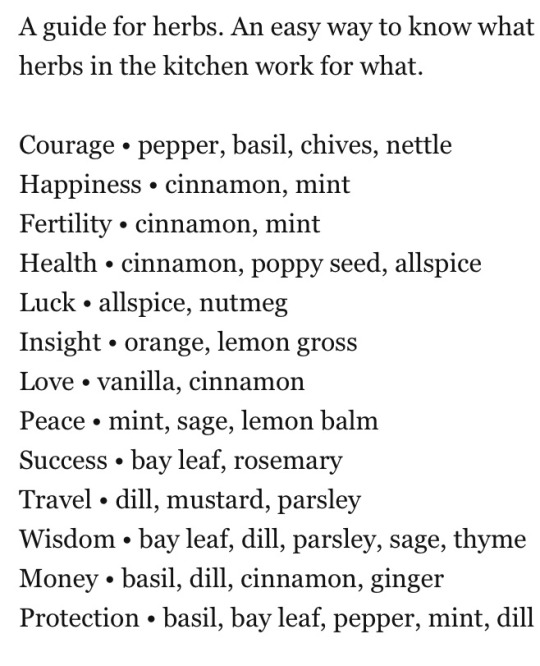
2K notes
·
View notes
Text
Draconic Offerings – A Personal Insight
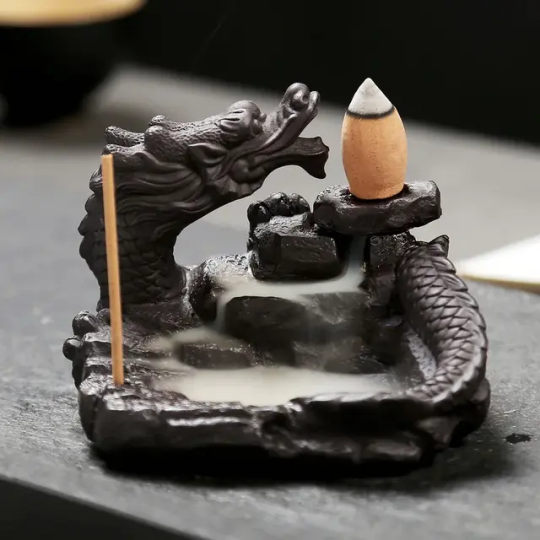
Offerings are a way of showing goodwill and honoring spiritual beings. Even more than that, taking some time to give an offering also means you are dedicating a moment of your day to thinking about them, which makes attuning to their energy easier and keeps the relationship you have with them alive.
Offerings are versatile and personal. Today I thought to share my own POV on giving offerings to dragons.
So remember: this is just my experience (or "UPG"). Other folks may have different insights!
_________________♡♤◇♧_________________

In my own experience dragons seem to like a variety of things, from simple to shiny, which to me reflects both their humble wisdom and love for beauty.
Natural beauties seem to captivate them most: pearls, crystals, metals, colorful patterns. Anything that gleams and projects lively colors.
They also seem to enjoy humbler natural offerings, such as stones (bonus points if they are an interesting shape or from an important place) and wood from powerful trees, such as willow or oak.

Offering Elements (like fire, water) feels pretty powerful especially when doing magical work. If the dragon in question is associated with a particular element, offerings of that element feel best but they seem to accept all elements still.
Food can be a great offering, but I feel like they don't make it such a big deal. To me, offering elements feels the best.
I'd try to figure out what they like before offering anything specific. If you can't, go for something more generalist until you get to know the dragon better. To me, it feels like food is a bit less essential to them when compared to other spiritual beings.

If you decide to work with them long term, it may be good to dedicate a space for them and do weekly or monthly offerings.
So here's my list of offerings I associate with dragons:
Water
Fire
Incense — which one varies, I like offering them according to the dragon. Though I know Dragon's Blood is a popular one and I like it
Shinies — pearls, shells, jewelry
Gemstones
Crystals
Metals
Stones and wood — especially if it has strong magical properties
Potent herbs

Food offerings:
I think of rich flavors and warm food. You could share a meal with them
Meat
Sweet fruits
I don't feel particularly strong for bread, milk and cookies, but they are under the "generally acceptable offerings" for most cultures. So I think you can give them if you're short on supplies or unsure, but I'd ask the dragon what they prefer
Alcohol — I have never offered any alcoholic drinks to dragons, but they might be appropriate. I would ask
Overall, as I have mentioned in another post, the dragons I work with don't really make a fuss about offerings. I give them because I want to share with them.
I do however use offerings in our magical work together, usually to power up the ritual, and on that note, offering corresponding elements feel the best.

Important Sidenote:
Be mindful that whenever you want to take anything from nature you must ask the local spirits for permission and make sure it's legal in your region.
You don't want to be taking anything too important for the survival of the ecosystem (even a fallen branch can be crucial for some organisms), and you also don't want to leave behind anything that could harm it.
I mentioned shells as offerings — unfortunately, taking them does have an impact in the ecosystem so I disencourage it. Their calcium is important for the ocean's chemical cycles and the shells themselves are used by other organisms, so be mindful of that.
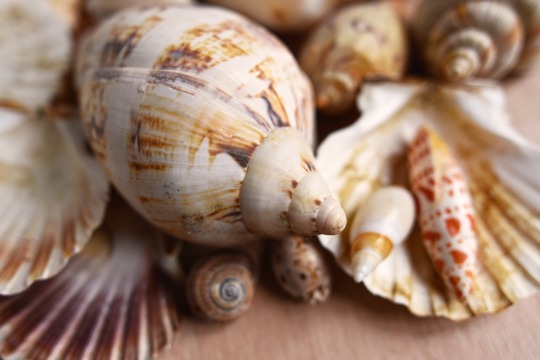
Final Considerations
There is not really too much to say about this, really. That is because offerings are very personal things.
One man's junk can be another man's treasure.
One dragon may like simple offerings, another one may like something fancier. You can offer an old necklace which has a deep meaning to you, or a simple food offering.
What matters is that you make your offering special for you and the dragon, and if you're unsure about what they like, by all means ask!
Or adopt the good old trial and error method.
And lastly, do take the opportunity to connect with your dragon. Don't just say "here you go" and call it a day. Make it special! Spend some time with them!
They'll enjoy it more if you put more time, effort and meaning into it.
Thank you for reading!
89 notes
·
View notes
Text

New Year's Spell
To leave behind the things that no longer serve you and set your manifestations for the next year
What You Need:
a black candle
a fireproof container (I used my cauldron!)
the Death card from your favorite tarot deck
a small piece of paper
bay leaves
a marker or pen
a manifestation oil blend (or if you don't have one, frankincense works too!)
Anoint your candle and place it on top of the Death card. Make sure you have something to catch the wax because you want to let your candle burn down but you don't want to ruin your card! Light the candle.
Use your piece of paper to write down all of the things that you want to leave behind you. Roll it up, light it with the candle, and let it burn in your fireproof container.
Use as many bay leaves as you like to write down all of the things that you want to manifest for the new year. You can write the words, use a symbol, or even use sigils. Write them out one by one and set them on fire with the candle, then let them burn in your fireproof container.
(Make sure you have some ventilation, bay leaves are pretty smokey when they burn and you don't want to set off your smoke alarm!)
Once you have finished with your manifestations, let your candle burn all the way down and scatter the ashes of your paper and leaves outside.
45 notes
·
View notes
Text
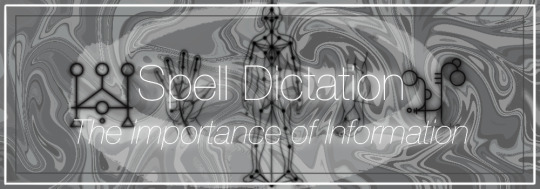
Spell Dictation: Forward
This post is aimed at three target audiences. The first are witchcraft content creators, in the hopes that they will start publishing spells that can accurately be reproduced by their followers. The second are advanced witches, in aims to give them an idea as to what direction they can expand their crafts. The last, and most important are the fledgling witches. Let this post act as a warning and as food for thought about your craft. 100% of the spells you find on the internet do not contain enough information to be accurately reproduced.
Word definitions:
Encryption: the process of converting information or data into a code, especially to prevent unauthorized access
Cipher: a secret or disguised way of writing; a code.
Subtle Body: The energetic system that is constructed of energetic fields, nodes, and conduits that connect them.
Energetic Awareness: The ability to be aware of energetic density, volume, properties, movement, and location.
Energy Point: An energetic node within the Subtle Body
Energetic Gates: An artificial Energy Point that connects a practitioner to a specific source of energy.
Conlang: AKA Constructed language, is a language that is created by one or a few individuals. Sometimes referred to as a fictional language.
Script: A set of symbols used to represent words, concepts, and/or sounds.
Orthography: The graphical representation of sounds, The Latin alphabet is a good example.
Transcription: The act of creating a new script that has a 1:1 representation of each letter in a language’s orthography.
Headspace: The ideal environment and mental state that allows for complete focus on a single task.
What is Spell Dictation?
Spell dictation is how a practitioner describes their spells on paper, digitally, or online. It can range from writing a spell out to having nothing but encrypted graphic representations. This process seems more difficult than it actually is when just starting. In essence, all it really takes is the time to sit and think about what you want to do and how you want to do it. Throughout most of classical magic’s history it was very common to encrypt magical writing. John Dee immediately comes to mind, as he was also the official cryptographer of the queen. As such, all of his occult workings and illustrations were heavily encrypted. Which worked successfully, as many practitioners use his works as they appear, rather than decrypt them. I have made an in depth post about the process of designing a spell here.
Why is Spell Dictation Important?
Being in the proper headspace is so important when casting. For a lot of people, the aesthetics of their spell is just as important for maintaining headspace as music and lighting. Without being in a good headspace the likelihood of your spells working as intended drops significantly. And having a spell that takes up several pages will cause you to break from it and ruin your headspace. If you mark all your pages with significant information, references, symbols, and incantations, then you can check all your sources before casting in order to have a seamless spell process. If you feel that you'll be able to remember every detail about the spells you put into your books, and you don't plant on sharing any online- then just use this post as a guideline for spells you find on the internet.
Necessary Elements of Spell Dictation for Accurate Spell Replication.
In order for your spells to be accurately reproduced by another practitioner it is important to include enough information. There are a lot of variables when it comes to casting a spell and sadly there's almost no modern spell dictations that contain enough information. The important variables to record are:
Subtle body programing/orientation
All possible nodes. (If a memory is a node, it will not translate perfectly for another practitioner.)
Physical objects used and the process of using them
The energetic process throughout the entire spell
The required state of awareness
The variables for building headspace
The center or source of passion
The intent and focus, depicted exactly as it was cast the first time.
Prominent energy points
Energetic current flow and density as it moves through the subtle body and the paths that it takes.
Time and locations, if necessary or desired.
What it targets
How it targets and/or reaches that target
Any spirits used in the spell and their properties and roles in the casting. Potentially even how to summon or commune with them.
Psychic abilities used and how they were implemented specifically, if necessary
Any incantations, their meaning, and any sigils that were used.
Any gestures or bodily movements that were significant.
Any symbols that were used other than sigils
Thorough descriptions of any energetic constructs and thoughtforms used.
Any astral information if necessary.
Any energetic gates used.
As a neat side-effect of densely representing information, your book of spells will be difficult to read without study. This is okay, as you’ll still be able to read it clearly.
The rest of this post is for inspiration and guidance on how to achieve the necessary amount of information.
Concepts for Spell Dictation
An important aspect of thorough spell dictation is being able to fit as much information as possible onto a single page of your medium of choice. This is done by the application of magical scripts, sympathetic notations (symbols that represent a much longer word or sentence), Sigils, Magical symbols, graphical representations, illustrations, encryption, conlangs, allusions to other texts/books, and general clever design.
Using a Magical Script & Conlang for Spell Dictation
Magical scripts are special orthographies used to either write in a conlang or transcribe your chosen language. These scripts can be built on the phonetic sounds of a language or a 1:1 representation of that language's orthography. Doing so does two things at the same time: makes it difficult for others to read your work, which can be perfect for discreet practitioners; and, adds to or improves the general aesthetics of your work. Which can be extremely beneficial; for generating a headspace once you have familiarized yourself with your own methods. Using a conlang can make your spell feel more magical, especially if you design the language yourself and choose what sounds make up your language.
Allusions to Other Texts or Books
You can create a code to reference outside material that takes up very little space on your page. A simple number sequence can be used to describe the page number and line. Or you can create a code specifically for referencing in another one of your books that is dedicated to relevant information like, charts, tables, correspondences, herbs, gestures, etc. This can be done b y assigning each section in that book a letter, and each entry under that section a number. I do this very often in my second and third grimoires. Doing this allows you to include much more relevant information for casting your spell without taking up tons of space on your page.
Magical Symbols, Sigils, & Sympathetic Notation
One of the most common elements found in spellwork are sigils. These symbols pack a lot of information in a relatively small space. And if they’re designed a certain way, they can easily be reproduced from the pages of your grimoire, graphic, or online reliquary. Magical symbols work in much the same way, however they can also be integrated into your conlang or script. Sympathetic notation is when you use pictographs, code words, photographs, or illustrations as representations for magical concepts. These won't be inherently magic, but rather would signify important concepts that are to be considered when casting.
Graphical Representation & Illustration
Graphical representation refers to charts, graphs, and/or tables for important information. As much of magic exists on a spectrum it can be very simple and useful to create graphical representations for many of these concepts, especially if the magical concepts are wordy. Illustrations can work in much the same way as it often takes more space to describe a shape or design rather than just dedicating a small space to draw it out. This is a relatively common practice in online witchcraft communities, though most of which are superficial.
Possible Augmentation of Media
Sometimes, it can be very helpful to notate spells with the music you like to use to cast. The song can be augmented and written in your grimoire to look like song lyrics, alongside a short code to grab bits of information out of the lyrics. This practice can be very useful to discreet witches. The same can also be done with literature, poetry, videos, and movies by notating a time or page along with a code. Sometimes a single quote from a movie can pack a significant punch for the concept you’re trying to capture. Maybe notate the movie or series title with the range of time in which the desired dialog or scene takes place.
Ciphers, Encryption, & Code Words
Sometimes even transcriptions and references aren't enough to protect your information from being read by those that don't have your permission to read it. To solve this issue, you can create an encryption. This can be as simple or as complicated as you’d like. From using conde words to creating a multi-variable cipher wheel. This way, even your transcription wont make sense. Doing so with a magical script would actually add another layer of protection to your encryption. However, doing so can be difficult to use on the fly. The only way it can used once encrypted is to take the time to decrypt your own spell onto a piece of paper or tablet/phone/computer before the spell can be done. I personally only use encryption for my curses and spells that could be dangerous if used by the wrong people or practitioners who dont have enough experience or context to safely cast.
Clever Design
As far as aesthetics and encryption go, you can get very clever with how your information is depicted. There are infinite options for you to choose from when creating your work. One of the biggest elements I would recommend taking into consideration would be continuity of design. If you don’t know where to start when it comes to the aesthetics or designs for your grimoire, I'd recommend starting by watching and reading media about Concepts in Design.
Examples from my own grimoires
The Grey Grimoire
In my first Grimoire I hadn’t really dove into the importance of in-depth spell dictation. The spells in this Grimoire are difficult to reproduce for this reason. I have to remember a lot of the variables involved when I was creating the spells.
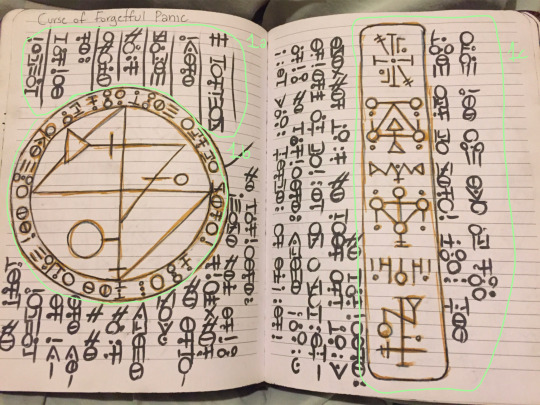
Key:
1a: A list of all the necessary items and tools required for casting.
1b: A spell circle intended to be reproduced for use in the spell and then later burned.
1c: A Sigil-chain and accommodating incantation, intended to be reproduced and burned as part of the spell.
Also, in this Grimoire, I created a complex cipher wheel that is used to decode the Golden Grimoire.
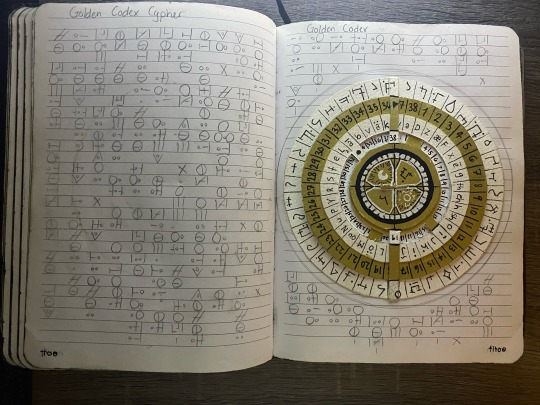
The Golden Grimoire
In my second Grimoire, I started moving away from magic that required physical tools and objects. A majority of the spells in this book are purely gestural and energetic, with a few exceptions. It was here that I began realizing the importance of detailed spell depiction. Unfortunately, I didn’t take into consideration the amount of space all of my reference tables would take up in the book. This Grimoire only has about 12 spells in it as a result.
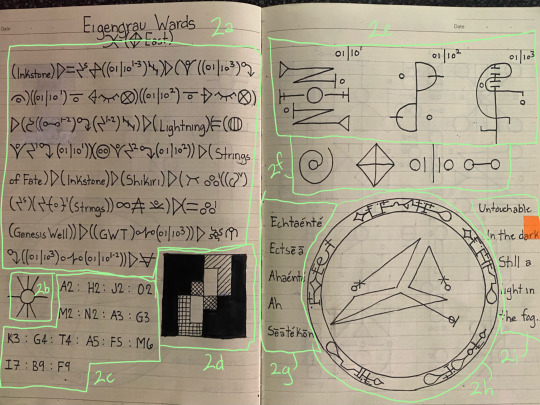
Key:
2a: A pictographic script used to describe both the gesture and energetic process of casting.
2b: A symbol that denotes the level of difficulty for the energy work involved.
2c: References to tables and infographics within the Grimoire.
2d: A 2D topographical graphical representation of how to program the subtle body and the subsequent energetic fields.
2e: The Sigils involved. In this case they are to be reproduced energetically as constructs.
2f: Symbols that are sympathetic notations of important concepts involved in casting such as: Integral energy points, key energetic properties, and what correspondences are the most important to physical use.
2g: The incantation.
2h: What may look like a spell circle, but in actuality it is a graphical depiction of the gestures and stances over time.
2i: A phrase meant to give insight into the mindset required for casting.
The Red Grimoire
In my third Grimoire, which is still very much a work in progress, I applied a lot of what I learned from the prior two about space management and densely recorded information. In this Grimoire, the spells are 100% gesture and energy based and require no physical objects at all whatsoever. Furthermore, the spells in this Grimoire are designed to be modular so that they can be combined to create spells with more specific effects, as each element within each spell is depicted in it’s entirety in terms of energetic programming, mindset, gestures, etc.

Key:
3a: The title of this specific combination of gesture magic and energy work.
3b: A more detailed 2D topographical graphic representation of the subtle body’s programming.
3c: A more refined variation of the pictographic script used to describe the gestures and energy work.
3d: Important information related to the process of preforming this spell-component.
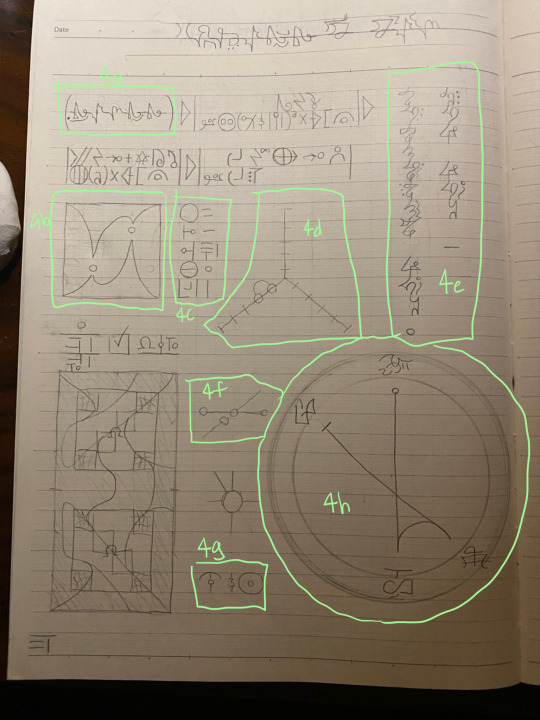
Key:
4a: The beginning of this gesture is notated to begin with the spell-component page above this one.
4b: A graphical representation of the shape of the energetic constructs involved in casting.
4c: References to other books, like the prior two grimoires.
4d: graphical representation of the level and point of focus of Gnosis
4e: Important information required to maintain the proper headspace.
4f: The bodily stance that should be used through the entire series of gestures.
4g: Important Energetic points that should remain in use throughout the entire spell process.
4h: A graphical representation of how the intent and headspace should shift throughout the spell process.
Word definitions:
Encryption: the process of converting information or data into a code, especially to prevent unauthorized access
Cipher: a secret or disguised way of writing; a code.
Subtle Body: The energetic system that is constructed of energetic fields, nodes, and conduits that connect them.
Energetic Awareness: The ability to be aware of energetic density, volume, properties, movement, and location.
Energy Point: An energetic node within the Subtle Body
Energetic Gates: An artificial Energy Point that connects a practitioner to a specific source of energy.
Conlang: AKA Constructed language, is a language that is created by one or a few individuals. Sometimes referred to as a fictional language.
Script: A set of symbols used to represent words, concepts, and/or sounds.
Orthography: The graphical representation of sounds, The Latin alphabet is a good example.
Transcription: The act of creating a new script that has a 1:1 representation of each letter in a language’s orthography.
Headspace: The ideal environment and mental state that allows for complete focus on a single task.
If you have any questions or content suggestions, click here. If you’re brand new to witchcraft, I recommend checking out this post.
237 notes
·
View notes
Text
Explain the basic: Shielding and Banishing

Shielding and banishing are two of the most important things you have to learn before you start your journey as a witch. Both practices are essential for maintaining energetic boundaries and ensuring a safe environment for magical or spiritual work. used to protect oneself from negative energies, entities, or influences and to remove unwanted energies or entities from a space. Here's a breakdown of shielding and banishing in witchcraft:
Shielding:
Shielding involves creating a protective barrier around oneself, which acts as a defense against negative energies or influences. It helps maintain personal boundaries and prevents unwanted energies from affecting one's well-being. Common methods of shielding include:
Visualization: Visualizing a shield of white light, a protective bubble, or an impenetrable barrier around your body. This visualization can be accompanied by the intention of repelling negativity while allowing positive energies to flow.
Energy Manipulation: Drawing upon personal energy or universal energy to create a protective shield. This can involve using hand movements, gestures, or energy manipulation techniques to form and maintain the shield.
Use of Objects or Symbols: Carrying protective talismans, amulets, or symbols such as pentagrams, runes, or protective sigils that represent personal protection. These items can aid in maintaining the shield's strength.
Banishing:
Banishing refers to the act of removing negative energies, entities, or influences from a person, place, or space. It's a method used to cleanse and purify an area or oneself from unwanted energies. Common practices for banishing include:
Smudging [which is a closed practice]or Cleansing: Burning herbs like [sage, palo santo], or cedar to clear a space of negative energies. Using the smoke to cleanse and purify the environment.
Salt or Protective Circles: Sprinkling salt around a space or creating a protective circle by physically drawing or visualizing it to keep unwanted energies out or to contain them within the circle for removal.
Rituals and Spells: Performing rituals or casting spells specifically designed for banishing. This involves using candles, herbs, oils, and specific incantations to remove negative influences or energies.
Invocation of Higher Powers: Calling upon higher spiritual entities, deities, or guides associated with protection or cleansing to aid in banishing unwanted energies or entities.

As always, I will love to hear your thoughts! and if you have any questions, I will be more than happy to answer them! If you liked it, leave a comment or reblog (that is always appreciated!). if you are intrested in more method check the masterlist!
1K notes
·
View notes
Text
Protective Measures Against Common Hexes or Curses
Against the Evil Eye:
Hang dill weed over all windows and doorways in the home.
Wear a blue eye bead for constant personal protection. Hang one from the rear-view mirror of your car, as well.
Keep a cimaruta (an Italian talisman sporting multiple symbols) on your altar to stave off interference in your magical work.
Against Nightmares:
Keep a silver bell in your bedroom, and ring it to drive off nightmare-causing evil spirits each night before you go to bed.
A small dish of coffee beans kept by the bed staves off nightmares.
Rosemary plants placed near the bed shield against unpleasant dreams.
For Safe Automobile Travel:
Keep a whole ash leaf in the glove box for magical protection.
Keep a tiger’s eye in the vehicle to protect against accidents.
Hang a bag filled with wormwood and plantain from the rear-view mirror to prevent negative spirits from taking on the position of co-pilot.
7K notes
·
View notes
Text
Protection Magic: Some Important Concepts

---------------------------------------------------
Long post based on my experience and research. Meant to be informative. I don't claim to know the absolute truth.
---------------------------------------------------
Protection magic is any type of work meant to protect A from B, and there are many ways that this can be done: prayers, charms, talismans, tokens, casting circles, setting up wards, visualization. The list can go on and on because it can be done in many different ways and combining many different methods.
But methods are not the topic of this post today. No, today I would like to talk about some key concepts to keep in mind before getting started on making protections and keeping them effective.
The Importance of Cleansing

Before doing any protection work I like to do a cleansing. Imagine you have an open water bottle, and because it was open, a lot of dirt has found its way into it over time. You decide to seal the bottle so no dirt comes in, but you don't pour out the old water, so you end up sealing it in. Yes, you'll keep more dirt from coming in, but the muck is still there.
It is easier to see this being applied to a physical location, but I personally also apply this to personal protective tokens. I feel they work better when you are taking care of your energies by doing regular cleanses and managing internal negativity.
Important Definitions
Protection ≠ Banishing ≠ Cleansing
I feel a lot of people are under the impression that these are all the same. I think they all work together towards a similar goal, but their jobs are different.
Protection: protecting something from something
Banishing: driving out entities
Cleansing: clearing out energy
You can do cleansing, banishing, and protection at the same time, but that doesn't mean they are the same. You can do a ritual including all of them, but you can also just do a cleansing or just do warding (which is a form of protection).
Note: cleansing is not restricted to “negative energy”. You can cleanse any kind of energy. Exemple: a friend of yours decides tarot is not for them and hands down their deck to you. If you wanna work with that deck it is highly advisable that you do a thorough cleansing of it and then infuse it/consecrate it with the energies you want. It's not that your friend has “bad” energy, it's just that you might not want to work with the same energies they have, or use a tool that has someone else's energy in it.
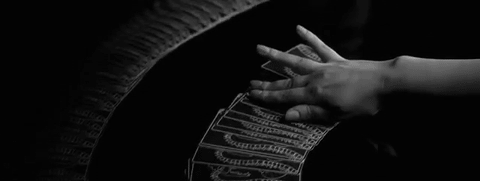
Not Necessarily a Lazy Job
One important thing with protection magic is that no matter how strong or how successful are at doing it is that it is not failproof. I have yet to see protection work that lasts forever, and there may be a few reasons for it.
Negativity also comes from within
Imagine you have a fish inside an open fish tank. Just like the bottle example earlier, you decide to put a lid on so you prevent leaves from falling into the tank and polluting the water. However, there's a fish, a living being in there, and it produces waste. It is impossible for the fish to live without producing waste. If you don’t regularly clean the water, ammonia and fecal matter will build up.
In this analogy, you are the fish. I am the fish. Humans literally cannot live without ever having a negative thought or feeling, it is part of our existence and we have to live with it. No one lives in constant bliss.
That doesn't mean we have to live in the muck though. That's why cleansing yourself is important.
No one is immune to the environment
Here I have another analogy for you. Imagine you're facing a harsh winter, but you are safe in the security and warmth of your house. Your house is protected from the cold so you don't even mind it. However, you have to go outside. You dress up, go out and you feel very, very cold. You could perhaps wear something warmer, but it will never feel the same as home. Yet it is better than going outside naked, no?
Same thing for energies. You can have protection, but depending on how strong the energy in the environment is you are sure to feel it to at least some degree. However it's best to have some protection than no protection at all.
And there is a difference between Feeling an energy and dwelling in it vs Feeling an energy and not letting it latch onto you.
Energy can wear off, and new energy can build up
Energy is ever changing, ever moving. If you do a strong protection spell once, it can last for a long while, but if you forget about it it will likely lose a lot of its strength over time. Some of what you put out there might wear off and be substituted by something else. The energy can also grow stale, which means it becomes less effective.
But if you do a strong spell every month you will not only make your protections stronger, but also constantly renew the energies and not let them stagnate.
So keep doing cleanses and every now and then give a boost to your protections so they are refreshed and recharged.
Note on "Negative Energy"
One of the main reasons someone might choose to do a protection ritual and a cleansing is to ward off negative energy. But is that really needed? What is "negative energy"?
Negative energy might feel like a sense of heaviness, dread, pain, sadness, feeling ill, angry, sad or anxious. Emotions produce and attract what we can call "negative energy", the same way it can make us feel those things.
And while I personally think nobody wants to feel them, we must understand they are not always bad at their core.

The uncomfortable feelings they can cause may also be a gateway for healing and transformation. Pain tells us there is something that needs to be worked on, that needs change.
If you are feeling negative, ask yourself why. Why does this bother me? What makes me feel this way? What can I learn from this pain?
If you happen to feel negative energy, it is good to cleanse and protect. But I advise you to always look for the source to see what can be done about it or what you can learn from it. Don't just try to use spellcasting to run away from your shit. Own your shit. Deal with it.
Otherwise, it will keep coming back no matter how much protection you have.

Conclusion
It is impossible to always be free from “negative energy” all the time, no matter how strong your protections are. But protections can absorb some of the blows that you would otherwise take and ease the ones you were going to take no matter what.
Protection magic alone will not solve all your problems. It is a great tool to help you keep your center and remain grounded, but it is not usually something you do once and forget. It is a continuous, ever evolving work, meant to be used in conjunction with other types of spellwork.
And most importantly, it can give you some comfort through the many trials of life.
Thank you for reading, and good luck on your path! ♡
973 notes
·
View notes
Text
Using water in spellwork according to Traditional witchcraft and folk Magick (not wicca or modern witchcraft; these uses will be different):
+Well Water: healing and self care elixirs and potions
*note: to collect this water you must first make a shrine to honor the Guardian of that well facing North or West. This should be done on a full moon and you should leave an offering there or outside somewhere every full moon if you intend to use it for healing. The night you make your shrine you should take your vessel for creating these healing potions (usually your tea pot) and soak the entire vessel in water from the well in a bowl out in the moon light. Then let it air dry and you can use it from then on. Every full moon you should at least pour some drinkable water near or on the shrine as a thank you and rinse your vessel in water from your well (aka the sink in most places that have one).
+Snow Water: working with death and the changing seasons, to bring drastic and destructive change, to imbue someone or a place with a deep cold
*note: collect in any bowl during snow fall (do not pick up snow to use) and let the water sit and freeze overnight and thaw in the morning.
+Dew Water: collected from baneful plants it can be used in curses and hexes, collected from trees like oak trees used for protection and strength related spellwork
*note: use gloves when collecting from baneful plants and don't ingest it. Use the water quickly before it evaporates.
+Tap Water: water from the tap comes from a specific source in your city so this water can be used to connect with the Water Guardian deity of that water source and used for healing people and nature of the area
*note: the shrine mentioned in the well water portion is advisable here as well, although not required.
+Storm Water: torrential downpour storm water holds the energy of the storm itself and can be used in destructive magick and connecting with storm or weather deities, to bring chaos and disruption to someone's life, if a lightning storm the water can hold the energy to destroy life or property
*collect in anything but I don't suggest drinking it. I have collected it many times and it always looks pretty iffy to ingest.
+Moon Water: connect with moon related deities, healing feminine physical and emotional issues (please note I mean feminine sides of oneself not an exclusionary female gender only concept; although this water specifically heals physical female issues as well), adding the spirit of the water to spells for adding potency, as a base for alchemical works or making sacred waters, as a base for creating Hallowed Water, for space and altar cleansings in lieu of smoke, add to ritual baths for potency
*note: moon water is collected in a sacred vessel attached to the end of a long wooden pole or staff. Then this vessel is dipped and raked across the reflection of the moon in another body of water (ponds, pools, rivers, etc). This is done 9 times from each of the Four Quarters after calling them and their Guardians to the rite. Then the staff with the water is left outside where it will consistently have the moon's light on it for at least 3 hours. Do this on the Full Moon for the full 3 days of the moon's cycle. Moon water in a jar in the window sill is a wiccan or modern witch concept.
+War Water: Hallowed Moon water that has rusted nails, metal shards, screws, etc added to it. It must sit for at least one full year to potency. After that year the water is ready to use and can be added to and the metal pieces are left inside. This can be used to break small hexes and curses or to remove curses and imprints from previously owned items.
+Saining Water: use to intensely cleanse a space and remove unwanted spirits or imprints from a home. The recipes vary but utilize well water, moon water, jalapeno water (cut up fresh jalapeno and let sit in a jar of half water half white vinegar or vodka for a full moon cycle), frankincense oil, clove oil, 9 bay leaf ashes, charcoal from a funerary fire, various bones of your choosing, and a splash of War Water. These recipes are usually very personal and aren't shared past these basic ingredients.
+Rain Water: collected during rain that is gentle with little wind and may still have the sun peeking out and creating a soft golden glow. This water is used for bringing peace of mind or peace to a location. Can also be used in rituals involving water-oriented deities.
🌛
648 notes
·
View notes
Text
a publisher reached out to me about doing a foraging book and I just like
no one wants that book i'd write, it would just be an entire book about all the different land use histories of urban spaces and why they're full of heavy metals. the plants I *want* to write and draw about would practically be a footnote compared to the worried-auntie-warnings

i insisted on including lead in the gardening book because I gotta
3K notes
·
View notes
Text
10 notes
·
View notes
Text
In regards to research:
Don’t accept witchcraft books for history. Read history texts.
Don’t accept witchcraft books for mental processes. Read psychology and biological texts.
Don’t accept witchcraft books for mythology. Don’t accept witchcraft books for religion. Read original texts and papers written researchers credited in their fields.
Use witchcraft books for witchcraft, and witchcraft alone. That is what they specialize in and what they are published for. If it branches out into a different subject, be suspicious and research the topic later.
10K notes
·
View notes
Text
Terms in Witchcraft (You may encounter) A's - Part 2
Note: Not a complete list of all terms, but does include quite a few, along with their meanings.
ASPECTING: when a person during a ritual or magickal exercise, manifests ASPECTS of a God/dess, with/in themselves.
ASPERGER: a bundle of fresh herbs or a perforated object, used for purificatory purposes to sprinkle water during or proceeding ritual. (Not to be confused with Asperger's Syndrome!)
ASSOCIATION OF CYMRY WICCAE: One of the oldest Witchcraft associations in the U.S. Founded in 1967, it provides member Churches, Covens or Groves with Federal I.R.S. Tax Exempt status. It has included every major Wicca tradition in its membership at one time or another. It consists of member Witch and Wiccan churches whose traditions derive most of their religious philosophy from Celtic sources.
ASTRAL: a realm of existence parallel to physical reality but slightly apart from it. In this realm, both time and space may be traversed by the nonmaterial body. A wide variety of entities inhabit the astral; elementals, phantasms, ghosts and the conscious or dreaming presences of living individuals
ASTRAL BODY: a duplicate of and existing within the physical body, but made of a substance not physical. However, this body can sometimes leave the physical body, and in some cases can temporarily create a separate physical body.
4 notes
·
View notes
Text
Terms in Witchcraft (You may encounter) A's - Part 1
Note: Not a complete list of all terms, but does include quite a few, along with their meanings.
by: @chickenroost
ACOLTYE: a beginner or "novice" as used in many magical orders and groups. Typically denotes the lowest rank in such a group.
ADEPT: one who has reached a certain level of mastery in their studies of magic. can also denote a specific level of initiation in a craft tradition.
AFFIRMATIONS: a belief that repetitive "Positive Assertive Thoughts" will influence people and reality. also known as "Power of Positive Thinking."
ALEXANDRIAN TRADITION: A Wiccan religious tradition which traces its linage to Alex Sanders of England, who died in 1988. Alex and Maxine Sanders were the founders; The Alexandrian tradition is an offshoot of Gardnerian Wicca, but also includes traces of Ceremonial Magick, Egyptian & Classical religions, Qabala, and the teachings of Aleister Crowley. This tradition has become the most popular in England because of its openness which makes it more accessible to seekers.
ALGARD TRADITION: A Wiccan religious tradition founded by Mary Nesnick, of N.Y. City, in late 70’s. Their Book of Shadows includes a combination of Gardnerian and Alexandrian components.
ALRAUN: a talismanic image made of rowan wood.
ALTAR: a table or sometimes any flat surface used to hold the symbols and tools during the performance of religious and/or magical rituals.
AMERICAN TRADITION: This Wiccan tradition is an offshoot of Gardnerian Wicca, founded by Ed Fitch and several Southern Californian Gardnerians in the late 70’s. The tradition includes Gardnerian material and additional material supplied by the founders. This tradition is sometimes known as Mohsian, after two of the founders whose last name was Mohs.
AMULET: a magically empowered object that deflects (sends away) specific, usually negative, energies. Generally, a protective object.
ANAPHRODISIAC: a substance, such as camphor, that reduces sexual desires.
ANIMA / ANIMUS: Jungarian concept that ANIMA, is the buried feminine element in a man’s psyche & that ANIMUS is the buried masculine element in the female. This then fits to the Pagan views that Self and/or Soul, is both male & female, and with the concepts of reincarnation
ANIMISTIC: the belief that all forms of Nature have a Divine Spirit within.
APHORISM: a sparsely worded, and direct little saying. Ex.: ‘As above, So below.’
APHRODISIAC: a substance that produces sexual excitement. Similar to Viagra
ARCADIAN TRADITION: A Male oriented worship of the Horned God. side note: most Arcadian groups admit women
ARCANA: 1) Secret knowledge. 2) used to denote a classification of the cards in a TAROT deck of cards. The Major Arcana being the “trumps” numbered from 0 to 21, the Minor Arcana being the 56 “court” cards
AROMATHERAPY: 1) use of various flower, herb, oil and incense fragrances and smells. 2) HOLISTIC AROMA: uses massage and smell. 3) MAGICKAL AROMA: uses smell and visualization
”AS ABOVE, SO BELOW.”: this saying means that universal & natural laws apply to inner & outer consciousness. That everything is connected and is part of everything else
ASPECTS: qualities or characteristics of something or Diety, etc. Ex.: Luna is an aspect of the Moon Goddess. Orion is an aspect of the antlered or Horned God
3 notes
·
View notes
Text

123 notes
·
View notes
Text
How to curse a person or an institution
This spell has been crafted (and used) specifically as an anti-sexist/anti-patriarchal curse but may be tailored to other situations.
You will need:
a safe space
candles or incense (optional)
a piece of paper
matches or a lighter
a small fire-proof dish or bowl
something pointy and sharp (a bobby/hair pin, a nail, a thorn, a claw discarded by an animal etc.)
Find or create a sacred space. This is essentially a magical safe space. Ideally somewhere you are (and feel) safe and where you won't be interrupted. You can make the boundaries tangible by marking them out (drawing a circle, marking each cardinal point with an object, finding a space in nature which is marked out by different trees or rocks etc.)
Open the ritual by welcoming the assistance/help of something greater than yourself (your community, ancestors, a deity, a pantheon, Nature, the Earth, etc. Whatever speaks to you). If you use candles or incense, light them at this point.
Write down the name of the person/institution you want to curse, fold the paper, and place it in the bowl or dish.
Put yourself into a state of focus/concentration (meditation, music, entheogens, by staring into fire or candles, etc.). Allow yourself to feel the feelings of anger, hatred, bitterness, injustice, sadness etc. elicited by the person or institution you want to curse. Embrace these emotions, this darkness, without judgement. The rawer, the better. If tears come, don't wipe them off.
Focus your feelings into the edge of your sharp object (pin, thorn, claw, nail, etc.) Because of the nature of the curse (anti-sexist, anti-patriarchal), perhaps something which symbolises historic oppression of women would make it more powerful: a bobby/hair pin or edge of a clothes hanger, for e.g.
Place some of your spit or a tear on the edge of the object (other possibility: blood, depending on your path/on your level of comfort)
Pierce the folded piece of paper while focussing all of your emotions on the person you want to curse. Either speak your mind in stream-of-consciousness or use a pre-written formula you've come up with (I can help with that if needed). Call upon a greater power (fellow witches, a particular community, a deity, a pantheon, Nature, the Earth, etc). If a deity: favour a 'dark' or revenge deity. If the forces of nature: the wind, storms, thunder, the fires of the earth, etc. Optional: ask other trusted witches to accompany you and lend you their energy or carry out the same ritual, either at a distance or in person.
Light the paper and watch it burn in the bowl or saucer. Let your own anger simmer and boil over while you watch the paper burn.
Scatter the ashes in the wind or blow them out the window.
Thank nature/deities/ancestors etc. for guiding/helping you, blow out the candles (if you used any) and close your sacred space.
370 notes
·
View notes
Text
✨️🫙✨️Spells✨️🫙✨️

114 notes
·
View notes
Note
hello, yes, sorry to bother, but I was wondering if you had any other authors, people, ect, I should stay away from when reading and learning? I'm fairly new to everything. again, sorry to bother
Unfortunately, there is no such thing as an unproblematic pagan author. Even the ones who seem like they’re doing things mostly right have their flaws.
Here are the ones to avoid, fullstop:
Silver Ravenwolf - Conflates Wicca and witchcraft, claims only Wiccans are true witches, erases non-Wiccan witches and pagans, constant Christian-bashing, misinformation, false history, cultural appropriation, contradicts herself, hateful rhetoric, racism, history of attacking critics.
D.J. Conway - HUGE problems with incorrect information about deities, questionable interpretations of historical events, also conflates Wicca and witchcraft.
Raymond Buckland - Appropriates closed cultures, uses the g-slur to exoticize certain rituals and techniques, propagates false history (documentary on “The Burning Times” is utter rubbish).
Edain McCoy - Yet more misinformation about deities and history (POTATO GODDESS!?), mostly where it applies to certain Celtic-associated personages and events. Tries to make EVERYTHING Irish, especially when it’s not.
Catherine Yronwode - Racist, perpetual bully, claims LGBTQ+ teens should kill themselves and along with her husband has provided pamphlets and counseling to encourage this, known for attacking people online, threatens critics and pirates with death magic. Oh and she claims New Orleans voodoo is “fake” to bolster her own credibility.
Christian Day - The problem here isn’t so much with his writing as with his personality. The man is a rape apologist and has harassed women on social media on numerous occasions after they’ve called him out for problematic statements, and has threatened other Salem practitioners over personal and business disputes.
Here’s what to look out for with the decent ones:
Judika Illes - Supports Silver Ravenwolf, conflates voodoo and hoodoo, some cultural appropriation.
Scott Cunningham - Outdated information (not his fault, he died in the early 1990s), incorrect correspondences, proponent of “The Burning Times” myth, incorrect history, conflates Wicca and witchcraft.
Tess Whitehurst - Frequently quotes her own beliefs as fact without supporting evidence, conflation of deities and practices.
Ellen Dugan - Vehemently against Christian witches, proponent of “The Burning Times” myth, sometimes conflates Wicca and witchcraft.
S. Connelly - Conflates voodoo and hoodoo, cultural appropriation from both.
Dorothy Morrison - Some cultural appropriation, conflates hoodoo and witchcraft.
Anna Riva - Outdated information (1970s), some appropriation, conflation of voodoo and witchcraft, mild misuse of Christian terminology and rhetoric.
Keep in mind, this list is far from exhaustive, and there are plenty of authors that I have read and not seen problems with, but that may be because I’m not looking at it from the right angle.
For instance, everyone seems to have a problem with Kate West, but I’ve found her books to be helpful and informative and aside from the obvious Wiccan fingerprinting (which you’ll find in most modern pagan literature). And I’m sure someone is going to tell me in the notes of this post exactly what it is I’m missing.
The important thing with any witchy or pagan book is to read critically and use your brains. If something doesn’t make sense or doesn’t seem to jive with what you know about history or religion, look it up in a non-witchy book. Read up on history and religion from academical sources. Read up on botany and herbology. Build a practical knowledge base so that when you run across problematic statements, you know which way the wind is blowing…and more importantly, whether it smells like bullshit.
7K notes
·
View notes